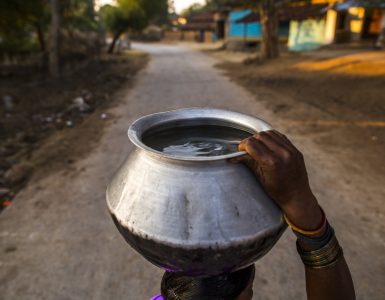A month into the second term of his government, Prime Minister Narendra Modi has rung in enough changes, and made announcements, to make clear that his ‘water for all’ promise will become the cornerstone of the second term.
From merging related ministries and departments under the newly formed Jal Shakti ministry to the choice of the minister to lead, there is no doubting the intent of the government on this one.
For those wondering just how big the challenge is, keep in mind that unlike say ‘power for all’ which achieved 100% electrification of households, the water for all challenge is much tougher.
With water, both availability and the cost of the last mile connect can be prohibitively high and tough, unlike for electricity.
Gajendra Singh Shekhawat, the new minister of the Jal Shakti ministry, is alive to the challenge and repeatedly stressing on the need for a holistic approach to the task. In fact, he has been quoted as saying that the situation was particularly bad in some of the largest states such as Uttar Pradesh, Bihar, West Bengal, Chhattisgarh and Odisha where the coverage of tap water is less than 5 percent.
More than 400 million households have to be provided drinking piped water supply, by his own estimates. Water that doesn’t just have to be piped to them, but found, cleaned, stored and used sustainably.
Importantly, the role of markets is limited in the case of water thanks to its status as a basic life resource which has made it a government monopoly by default.
The government will have to shed a natural tendency to centralise things as water is also a state subject. Options like a national grid, as in the case of electricity, gas or roads, do not exist. Linear systems, like the ones our cities have with water coming from increasingly distant sources at a high cost to the environment, will have to be reconsidered possibly in favour of shorter, closed-loop systems with both consumption and waste treatment being done locally.
As we have written earlier, the lessons from Cape Town’s day zero rulebook need to be applied right away, be it in terms of better measurement of consumption, effective communication of the need to conserve and recycle, and transparency in terms of availability.
Water focused green infrastructure, be it rooftop gardens, rainwater harvesting, wastewater treatment locally, better monitoring of industrial and agricultural consumption, and much more needs to become the new normal.
It’s not that India lacks in positive stories of managing this precious resource. The ‘Arvari parliament’ is a fantastic example of local community involvement with managing water where the villages that helped revive the Arvari river in Rajasthan’s Alwar district.
The local community formed their own nominee based ‘parliament’ to manage the river for the future too. This is the parliament that laid down guidelines for agriculture — what to grow (vegetables), and what not to grow (thirsty crops like paddy, sugarcane) along with the catchment areas — and meets every six months to take stock of the situation.
Tens if not hundreds of stories have surfaced in recent times of communities and villages working together to find their own solutions to the water challenge.
It is important that the government finds ways to work with these local communities, rather than stifle them with regulations and blocking access to them from the decision making process and actions that impact them.
Critical areas that need to be developed include rainwater harvesting, distributed stormwater management, water reclamation and recycling, source separation technologies that use dual distribution systems to provide different water qualities for different uses, and a much more prominent role of nature-based solutions to deal with wastewater.
And then there is the elephant in the room. Agricultural use of water and pricing of water for domestic consumption.
While pricing water for agriculture can be safely ruled out, the government has initiated steps to get farmers to sell power from their solar pumps to the grid. A step that it hopes will indirectly encourage them to conserve power for use, and therefore water, to profit from selling it to the grid.
Pricing of water, particularly in urban areas, is already becoming an issue as not only will that entail a basic promise of quality and quantity but also the issue of putting a value. Already we have seen the National Green Tribunal (NGT) raise the issue of a free water scheme in Delhi which covers 61% of households.
The issue was that under the ‘free’ regime, residents have been taken out of the loop for wastewater treatment or sewage treatment too, which is unfair. The example simply underscores the many challenges and solutions on offer for the Jal Shakti minister as he embarks on this massive task.
With 95% of the work staring at the ministry, India has a chance to lean on innovation, new rules, and technology like never before in this most hidebound of industries.
As an expert points out, the water sector is almost frozen in time as compared to other utilities like power or gas, thanks to the combination of government monopoly and basic infrastructure (pipelines) that can last for half a century and beyond.
For India, it is clear that these methods won’t be workable or sustainable. Hence the minister’s repeated use of the term ‘jan andolan’ or people’s movement.
Success here could change India and the world.
We wish the minister well.
Published with permission from iamrenew.com


Add comment